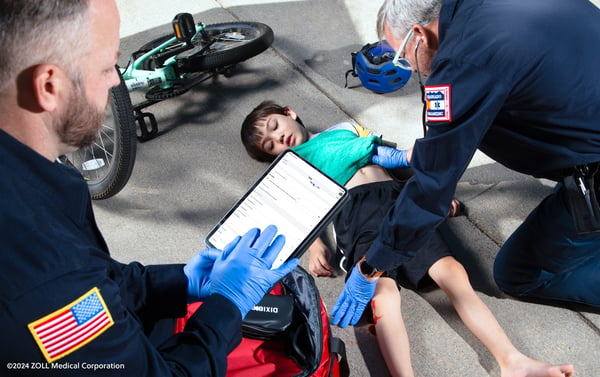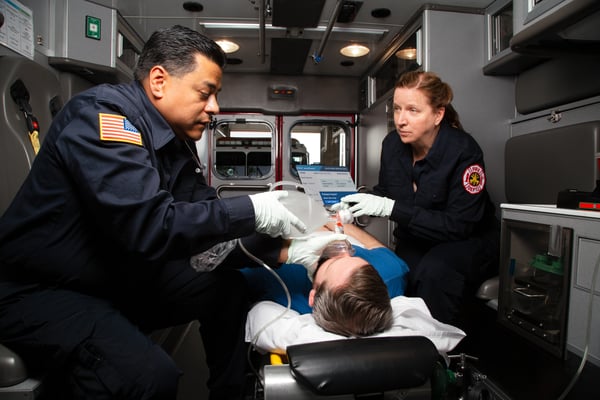Chart Smarter: Why One EMS Agency Ditched Paper for Mobile Tech
Compliance Accreditation and Patient Safety with Pre-hospital Emergency Care
In Emergency Departments (ED) and Intensive Care Units (ICU) in the U
Was this information valuable?

In Emergency Departments (ED) and Intensive Care Units (ICU) in the U.S., more than half of critically ill patients arrive via ambulance. Patients who arrive via ambulance are more likely to be admitted to inpatient than any other mode of arrival. In a recent webinar, “Compliance Accreditation and Patient Safety with Pre-Hospital Emergency Care,” ZOLL Data Systems presenters Mario Sanchez and Greg Howard discussed the communication gaps and opportunities for integration and collaboration across the continuum of care.
Treating EMS and pre-hospital data as integrated parts of the healthcare delivery ecosystem and enabling the flow of bi-directional information exchange will have positive impacts on three key areas:
- Patient care
- Compliance and accreditation
- Administrative costs
Patient Care
When a patient arrives at a hospital via ambulance, medics typically pass along vital statistics to physicians verbally, increasing the likelihood of errors. This communication disconnect is aggravated by differing EMS and hospital workflows. The result is missing or incorrect details carried over from the patient care report (PCR) into the patient’s electronic medical record (EMR) at the hospital. A digitally enabled workflow that automatically communicates essential medical information in near-real time, directly from EMS to hospital systems can prevent data gaps and improve patient care.

Compliance and Accreditation
The hospital EMR is the source of data used to evaluate hospital compliance and report to The Joint Commission. While essential, the process is time-consuming for hospital staff, as well as for EMS providers, who must share the pre-hospital data, in addition to hospital data. With automated HL7 data exchange between the EMR and EMS PCR systems, hospital and EMS providers can eliminate manual processes and delays, freeing them up to spend more time treating patients.
Administrative Costs
A patient’s data journey often begins at hospital registration and continues to nursing, to the physician, etc., until finally landing in the billing department. Unfortunately, many hospitals use manual processes to collect and share data for the EMR and billing. An automated data exchange platform can enable the patient’s data journey to match their care journey from start to finish. EMS and hospital billing departments can spend less time tracking down records and manually sharing information, resulting in fewer claim denials and lower administrative costs.
There are many more patient care, compliance, and administrative advantages to enabling seamless data exchange between EMS and hospital providers. To learn more about how HL7 data exchange enables better collaboration across the continuum of care while delivering compelling financial benefits, watch the complimentary webinar, “Compliance Accreditation and Patient Safety with Pre-Hospital Emergency Care.”
Related Posts
The End of Delayed Documentation
News Alert: New ePCR Integration Simplifies EMS Data Management and Enables Better Care Coordination
ZOLL Pulse Blog
Subscribe to our blog and receive quality content that makes your job as an EMS & fire, hospital, or AR professional easier.
ZOLL Pulse Blog
Subscribe to our blog and receive quality content that makes your job as an EMS, fire, hospital, or AR professional easier.




